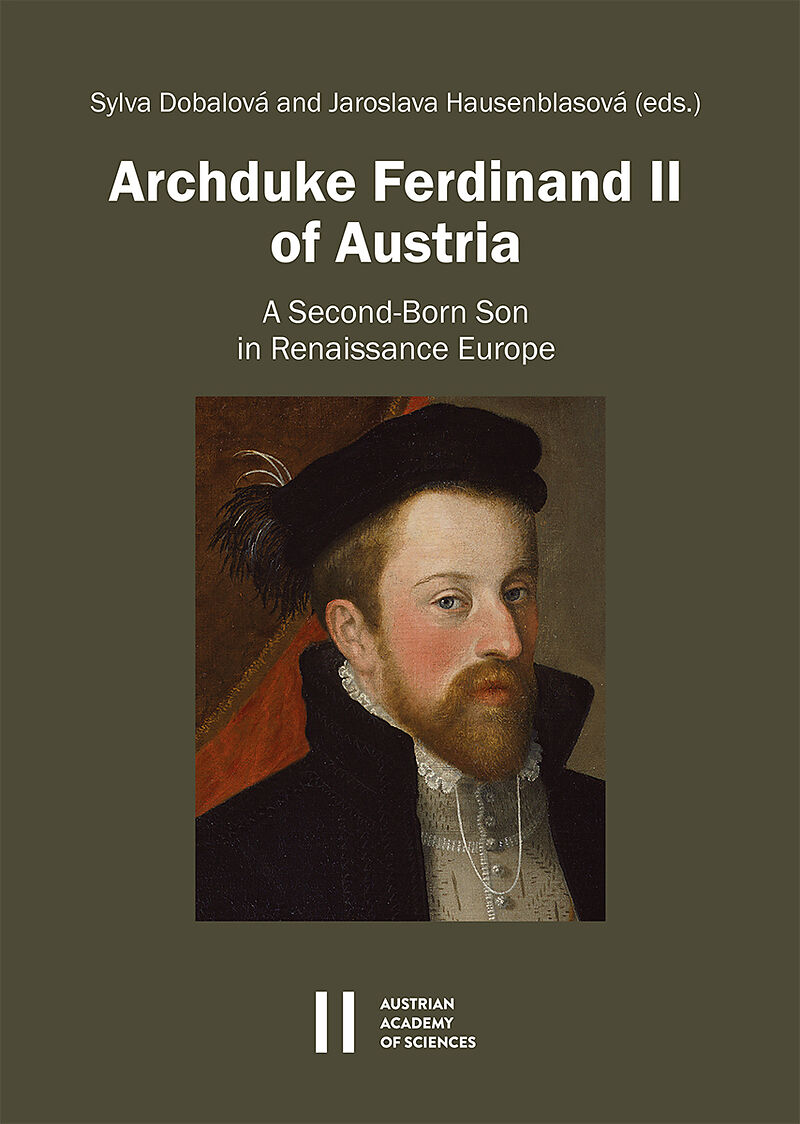Archduke Ferdinand II of Austria
Einband:
Kartonierter Einband
EAN:
9783700185017
Untertitel:
A Second-Born Son in Renaissance Europe
Herausgeber:
Verlag der Österreich. Akademie der Wissenschaften
Anzahl Seiten:
568
Erscheinungsdatum:
25.01.2022
Das Buch untersucht die kulturelle Patronage Erzherzog Ferdinands II. von Österreich (15291595). Als zweitgeborener Sohn Kaiser Ferdinands I. gelangte er nie auf den Kaiserthron, sondern diente als Statthalter von Böhmen in Prag und regierte anschließend in Tirol. Der Band zeigt, wie die unklare dynastische Position Ferdinands II. sein Schicksal mitbestimmte und mit welchen Strategien er sich als wichtiges Mitglied der habsburgischen Dynastie darstellte. Dreiundzwanzig Aufsätze, gegliedert in fünf Abschnitte, behandeln seine wichtigsten kulturellen Ziele, beginnend mit der Struktur seines Hofes und seiner Vergnügungen, den architektonischen Projekten, der Bildenden Kunst und den Interessen des humanistischen Kreises, den er um sich scharte. Das Buch präsentiert auch neue Informationen über seine berühmte Kunst- und Kuriositätensammlung auf Schloss Ambras in Innsbruck, die als Vorbild für die Sammelpraxis Kaiser Rudolfs II. diente. Die interdisziplinäre Zusammenarbeit von Wissenschaftlern vermittelt dem Leser ein einzigartiges und umfassendes Verständnis für das Handeln des Erzherzogs in den unterschiedlichen Beziehungen. Das Buch porträtiert den Erzherzog als fähigen Verwalter, kreativen Erfinder und erfolgreichen Netzwerker, während sich in der zweiten Hälfte des sechzehnten Jahrhunderts die Renaissance-Bewegung in Mitteleuropa entwickelte. Obwohl der Erzherzog seine politischen Ambitionen nicht verwirklichen konnte, trug er durch seine Förderung der Kunst und der Wissenschaft wesentlich zur Entwicklung der Regionen bei, in denen er residierte, und verband sie mit den kulturellen Errungenschaften West- und Südeuropas. Insgesamt bietet das Buch eine detaillierte Analyse des Lebensstils des ''Musterfürsten'' in dieser Epoche.
The book examines the cultural patronage of Archduke Ferdinand II of Austria (15291595), a son of Emperor Ferdinand I. Being the second-born, the Archduke never reached the imperial throne but served as the Governor of Bohemia in Prague and then he reigned in the Tyrol. The volume aims to show how Ferdinand II's unclear dynastic position was significant in determining his fate, and which strategies he used to represent himself as an important member of the Habsburg dynasty. Twenty-three essays organized in five sections cover his main cultural aims, starting with the structure of his court and its entertainment, architectural projects, visual arts, and the interests of the humanistic circle he gathered around him. The book also presents new information about his famous collection of art and curiosities at Ambras Castle in Innsbruck, which served as a model for Emperor Rudolf II's collecting practice. The book examines the cultural patronage of Archduke Ferdinand II of Austria (15291595), a son of Emperor Ferdinand I. Being the second-born, the Archduke never reached the imperial throne but served as the Governor of Bohemia in Prague and then he reigned in the Tyrol. The volume aims to show how Ferdinand II's unclear dynastic position was significant in determining his fate, and which strategies he used to represent himself as an important member of the Habsburg dynasty. Twenty-three essays organized in five sections cover his main cultural aims, starting with the structure of his court and its entertainment, architectural projects, visual arts, and the interests of the humanistic circle he gathered around him. The book also presents new information about his famous collection of art and curiosities at Ambras Castle in Innsbruck, which served as a model for Emperor Rudolf II's collecting practice. The interdisciplinary cooperation of scholars from different countries gives readers a unique and comprehensive understanding of the actions of the Archduke in mutual relations. The book portrays the Archduke as a skilled manager, creative inventor and successful networker as the Renaissance movement was developing in Central Europe in the second half of the sixteenth century. Although the Archduke couldn't fulfil his political ambitions, through his support for collecting, art and science, he contributed significantly to the development of the regions where he resided and connected them with the cultural achievements of Western and Southern Europe. As a whole, the book offers a detailed analysis of the lifestyle of the ''model prince in this era.
Autorentext
Dobalová, Sylvais Researcher at the Institute of Art History, Czech Academy of Sciences Hausenblasová, Jaroslavais Assistant Professor at the Institute of Czech History, Faculty of Arts of Charles University of Prague Karner, Herbertist Dozent für Kunstgeschichte, Stellvertreter der interimistischen Direktorin des IKM und Leiter der Abteilung Kunstgeschichte des IKM der Österreichischen Akademie der Wissenschaften

Leider konnten wir für diesen Artikel keine Preise ermitteln ...
billigbuch.ch sucht jetzt für Sie die besten Angebote ...
Die aktuellen Verkaufspreise von 6 Onlineshops werden in Realtime abgefragt.
Sie können das gewünschte Produkt anschliessend direkt beim Anbieter Ihrer Wahl bestellen.
Loading...
Die aktuellen Verkaufspreise von 6 Onlineshops werden in Realtime abgefragt.
Sie können das gewünschte Produkt anschliessend direkt beim Anbieter Ihrer Wahl bestellen.
| # | Onlineshop | Preis CHF | Versand CHF | Total CHF | ||
|---|---|---|---|---|---|---|
| 1 | Seller | 0.00 | 0.00 | 0.00 |
